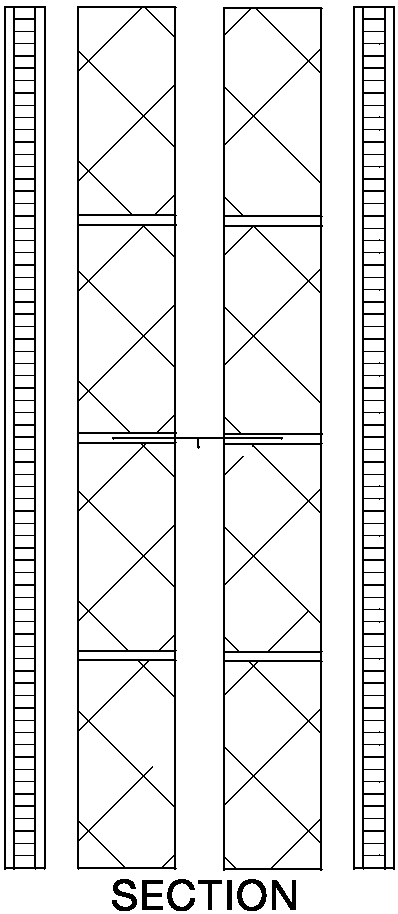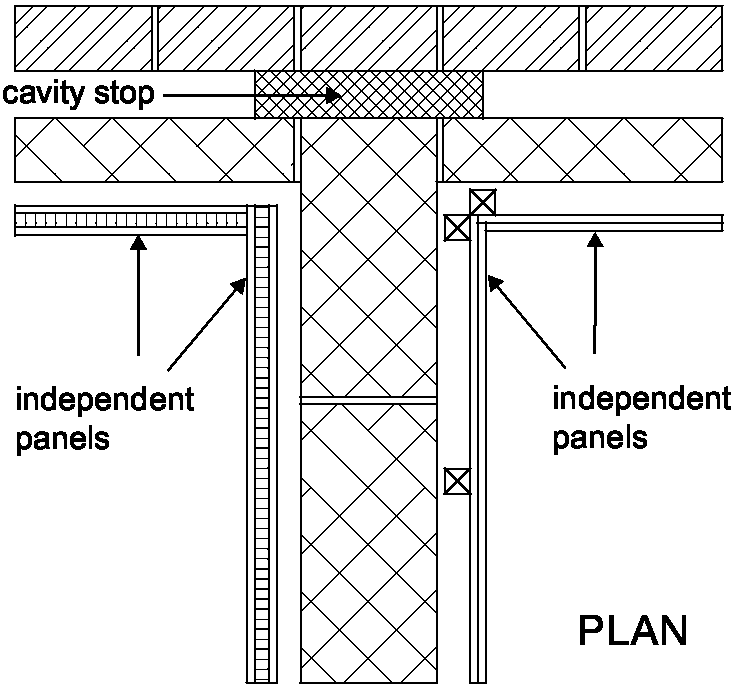
2.106 Wall type 3.2 Solid masonry core (lightweight concrete block), independent panels on both room faces (see Diagram 2-29)
Example of wall type 3.2
The required mass per unit area would be achieved by using
This is an example only. See Annex A for a simplified method of calculating mass per unit area. Alternatively use manufacturer’s actual figures where these are available.
2.107 Wall type 3.3 Cavity masonry core (brickwork or blockwork), 50 mm cavity, independent panels on both room faces (see Diagram 2-30)
Diagram 2-30: Wall type 3.3 with independent composite panels

Diagram 2-29: Wall type 3.2 with independent composite panels

Resistance to the passage of sound 31
2.108 Where the external wall is a cavity wall:
2.109 Where the inner leaf of an external cavity wall is masonry:
2.110 Where there is a separating floor the masonry inner leaf of the external wall should have a minimum mass per unit area of at least 120 kg /m2 excluding finish.
2.111 Where there is no separating floor and the masonry inner leaf of the external wall is lined with independent panels in the same manner as the separating walls, there is no minimum mass requirement on the masonry inner leaf.
2.112 Where there is no separating floor with separating wall type 3.1 or 3.3, and the masonry inner leaf of the external wall has a mass of at least 120 kg /m2 excluding finish, then the inner leaf of the external wall may be finished with plaster or plasterboard of minimum mass per unit area 10 kg /m2.
Diagram 2-31: Wall type 3 – external cavity wall with masonry inner leaf

2.113 No guidance available (seek specialist advice).
2.114 No guidance available (seek specialist advice).
2.115 Load bearing framed internal walls should be fixed to the masonry core through a continuous pad of mineral wool. See Diagram 2-32.
2.116 Non-load bearing internal walls should be butted to the independent panels.
2.117 All joints between internal walls and panels should be sealed with tape or caulked with sealant.
Diagram 2-32: Wall type 3 – external cavity wall with internal timber wall

2.118 Internal walls that abut a type 3 separating wall should not be of masonry construction.
2.119 If the floor joists are to be supported on the separating wall then they should be supported on hangers and should not be built in. See Diagram 2-33.
2.120 Spaces between the floor joists should be sealed with full depth timber blocking.
Resistance to the passage of sound 32